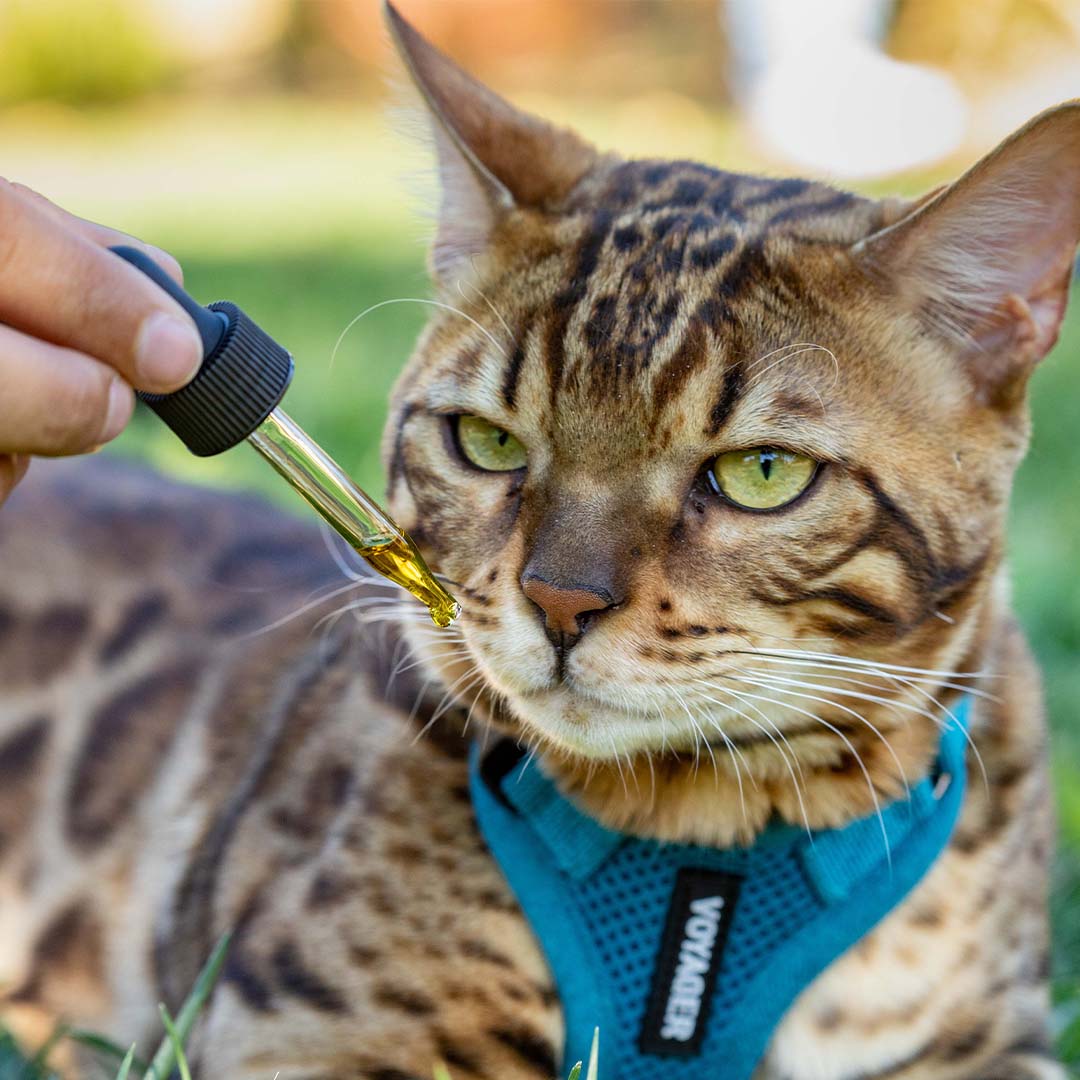Cats are known for a few things: Being super cute and cuddly, being picky about their food, and using furniture as a scratching post. While we love cats, it can often be frustrating to deal with some of their more destructive quirks. So, some people start wondering about declawing their cats to prevent this type of behavior.
Should you declaw a cat that likes to scratch at your expensive couch?
While it may be tempting to eliminate this stressor, cat declawing is actually a very invasive surgery that leaves felines deformed, in pain, and frustrated. There is a reason some vets refuse to perform this operation despite it being legal in most areas of the country. Luckily, there are ways to save your furniture and let your cat keep its toes. Keep reading to find out what declawing cats truly entails, the concerning side effects of the procedure, and how you can train your cat to leave your couch alone.
What Does Cat Declawing Mean?
Far too often, cat owners believe declawing is a simple procedure that removes a cat's nails — sort of like when we have our fingernails trimmed. But declawing is sadly not so easy and painless for cats that undergo this life-altering surgery.
Declawing is the amputation of the last bone on each of your cat's toes. If you compare this to a person, that's like cutting off the tip of your fingers at the last knuckle. Many vets now refuse to perform this operation because they feel it's unnecessary and risky.
Is Cat Declawing Safe?
The short answer is: no.
While the operation itself — known as an onychectomy — is not the most dangerous or lethal, it's the complications most cats face soon after that led the Humane Society to oppose all unnecessary declawing.
The cat world rejoiced when New York became the first (and only) state in the United States to ban declawing. Assemblywoman Linda Rosenthal called the procedure "cruelty, plain and simple."
Rosenthal also noted that there are so many alternatives to declawing that it's "barbaric" to let this practice continue. There's a reason she advocated for the anti-declawing bill for five years leading up to it being signed into law.
"Cats of New York: Show me your claws!
- Linda Rosenthal
While New York is the first state in the U.S. to outlaw declawing, the surgery is also banned in most European countries and throughout Canada. Individual cities within the United States have also banned declawing. This includes Denver, San Francisco, and Los Angeles.
Assemblyman Bill Quirk advocates banning the procedure in California statewide. He claims, “I am proud to be partnering with Paw Project on this legislation. When this bill becomes law, only licensed veterinarians performing the procedure for specific therapeutic purposes will legally be able to declaw a cat, saving them from a lifetime of pain and possible lameness."
Even though declawing is legal in most of the United States, individual veterinarians will often decline requests for this surgery. Read on to find out what cats undergoing this controversial operation endure.
How Are Cats Declawed?
As stated earlier, declawing is not actually the simple removal of a claw. Declawing is a surgery that removes the last bone of each of your cat's toes, which will never grow back.
After administering anesthesia, a vet places a tourniquet on each leg to reduce bleeding. Then, they use a scalpel or a pair of surgical scissors to amputate the bones at the end of each toe. The surgeon must properly sever the bone at this last joint to avoid the nail growing back.
Once the veterinarian cuts the bones, they close the ends of the cat's toes with sutures or surgical glue. The feet are then bandaged.
Another popular method for declawing is laser surgery. A practitioner uses a small, intense beam of light to cut through the cat's tissue, heating and vaporizing it. The laser removes the last joint of each toe on your cat. This is essentially the same surgery mentioned above but performed with a different instrument.
A third declawing procedure is the "tendonectomy," where veterinarians sever the tendon that controls claw growth in each toe. This can lead to abnormally thick claw growth, meaning your cat will need "frequent and challenging" nail trims to limit the risk of the claws growing into their paw pads.
After surgery, declawed cats will need to stay in the hospital for two days or more. To prevent bleeding and infection, cats need to stay bandaged during that time.
For the first few weeks, the cat will need to use paper litter to avoid litter attaching to their wounds. Some cats may refuse to use the paper since they can be quite picky about litter box changes.
The Effects of Declawing Cats
Painful and undesirable side effects can occur from declawing surgery. If the surgeon does not remove the nail perfectly, it can lead to immediate complications. The claw may grow back deformed, which leads to immense pain and infections. Removing too much bone is another common complication, causing painful paw pads.
There are other medical complications that often arise from declawing, even when the procedure is done correctly. This includes paw pain, infection, tissue death, back pain, and lameness. Nerve damage and bone spurs can also occur.
After removing part of your cat's foot, they will notice a difference in their walk. They may walk a different way due to the new pain they experience in their paw pads.
Also, your cat may refuse to use the litterbox. This is because clay, crystal, and other common material will be painful for their feet. The pain causes declawed cats to defecate and urinate outside their litterbox frequently.
Declawed cats can also have attitude problems. It's common for declawed cats to be aggressive because they no longer have their claws as a defense. They lose confidence, making them more prone to defensiveness towards people who handle them.
On top of that, declawed cats are also known to bite their owners, using their teeth instead of claws to make a point.
RELATED: What Can I Give My Cat For Pain Relief?
Alternatives to Declawing a Cat
You don't have to declaw a cat to prevent them from scratching furniture. There are other ways to ensure your cat's nails don't become a problem.
Trimming
Trimming your cat's nails is a great way to limit destructive behavior. Make sure you have a proper nail clipper designed for cat claws. Then, clip their nails before you reach the quick (the red part of the claw). If you clip their quick, it will be very painful and damaging to your cat.
It will take time for your cat to adjust to nail trimming. Start the routine when they are kittens. If your cat is already an adult, here are some tips that can ease the process:
- Start touching their toes so they can get used to the feeling
- Give them plenty of petting and loving before trimming begins. They will associate trimming with cuddles after a while
- Try offering some CBD cat treats to help them remain calm and soothed during the process — plus, they are tasty treats!
- Have a partner or friend help handle them if necessary
- Hold them firmly behind the neck, using their extra skin. Gently push them to a laying position so they cannot squirm away
Veterinarians and cat groomers can also clip cat's nails. Schedule weekly or bi-weekly appointments as necessary.
Nail Caps
Nail caps are covers that go over your cat's claws. They work best if you also trim your cat's nails — it helps the covers fit better. The caps will prevent your cat from scratching at all. To get them on properly, follow the same tips above for trimming. They will help a great deal if your cat is finicky!
Nail caps prevent cats from retracting their claws back into their paws. Some cats may find this annoying, and they'll bite at the nail caps at first, trying to remove them. Nail caps can also fall off after a while if your cat still tries to scratch certain surfaces.
While they aren't perfect, nail caps are painless and prevent your cat from damaging surfaces in your home. No need to declaw your cat when you have some caps!
How to Train a Cat to Stop Scratching
If you are fed up with your cat scratching your furniture or ripping up your bed, there are some things you can do to deter your cat from this destructive behavior.
Scratching Posts
Make sure your cat has designated scratching areas. They can be almost any material — cardboard, wood, or carpet. Different sizes are welcome, too.
Make sure to find one that fits your cat's specific preferences if you want this alternative to truly work. For example, if your cat loves scratching the stairs, getting them a horizontal scratcher that allows them to stretch out and scratch while laying down (how they like to scratch!).
Scratchers should be near the area where your cat prefers to scratch. For example, have a scratching post near the couch if they like to rip up the sofa. Or keep one hanging on the door next to your bed if they enjoy stretching up and scratching at your sheets.
You can also try catnip to entice them further. Sprinkle catnip or use CBD catnip spray on the scratcher to draw them to the spot.
Natural Calming Options
Use CBD treats or CBD oil on your cat's food to keep them calmer naturally. CBD is a non-psychoactive cannabinoid found in hemp that soothes your cat by interacting with receptors in their endocannabinoid system (ECS).
Feliway is another natural alternative that can limit scratching and urinating in the home. Definitely give these options a try if you want to make your cat calmer and decrease destructive behavior caused by anxiety, stress, and anger.
Sticky Tape
Put tinfoil or sticky tape (there are some made specifically for cats) on your furniture. Cats hate the sensation of stickiness on their paws and will often avoid a surface that's displeasing. Tinfoil makes a sound that also is unappealing to most cats.
Final Thoughts - Declawing Cats
The bottom line is that declawing is considered an inhumane operation that is never necessary. It leaves cats in pain, frustrated, and could even have serious consequences on your cat's health or behavior.
Luckily, there are ways to ensure your furniture — and your cat's toes — are safe. This includes trimming their nails, applying nail caps, and giving them plenty of scratching options. Think cat trees, scratching posts, and cardboard. With patience and consistency, your furniture will be saved from further damage.
Meanwhile, the Humane Society and other cat groups have continued to fight for the right of every cat to keep its claws. Aside from New York's complete declawing ban, other states have made some progress.
- New Jersey: The state assembly voted in support of banning declawing in 2017.
- Rhode Island: It's now illegal for landlords to require their tenants' to declaw their cats.
Celebrate these wins by giving your cat some CBD cat treats, catnip, and playing with their favorite ribbon toy. Remember that cats never scratch furniture to be vindictive. This is a natural behavior for cats that you can redirect with proper training and alternatives
Have patience and remember: Caring for your cat's well-being is worth more than a couch!








![Probiotics For Dogs [Soft Chews]](http://www.holistapet.com/cdn/shop/files/Probiotic-Infographic-1_472d7a29-e30c-435a-9638-1365d8c3a9f9.jpg?v=1725384841&width=104)






























Leave a comment
This site is protected by hCaptcha and the hCaptcha Privacy Policy and Terms of Service apply.